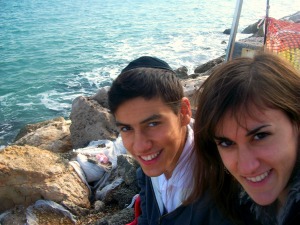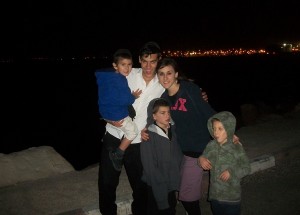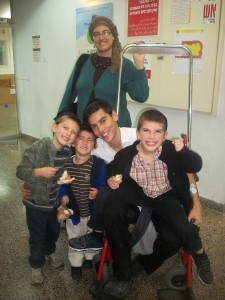Recently we began giving Yirmiyahu a special hypoallergenic formula, hoping that this will resolve the wheezing that began when he stopped exclusively having mother’s milk. Unfortunately, just like when we tried soy formula, his bottom began bleeding within a day of having it – clearly something in the formula is irritating his skin (he also simultaneously developed a slight rash around his mouth both times). And the wheezing has only slightly improved.
The obvious thing to do is stop giving him this formula, but we were told that we need to give his body time to adjust to it. That’s what we’ve been doing, but everyone dreads when he needs to be changed – he’s usually a very easy going baby, but now he screams when he has a dirty diaper and it takes a few minutes until after the diaper is changed until he stops.
With our last nine children, I’ve almost never used any kind of diaper cream. The only thing I can remember is applying coconut oil twice when one of them had a yeast infection. Then again, they were all exclusively nursed. and he hasn’t been, so unfortunately I’ve needed this pretty often to deal with the side effects of different formulas we’ve tried. However, this is so bad that the standard zinc oxide cream just isn’t enough. So I decided to make my own supercharged herbal diaper cream.
Homemade Diaper Cream
- 2 cups coconut oil
- 1/4 c. comfrey
- 1 T. yarrow
- 1 T. echinacea
- 1 T. St. John’s wort
- 1 T. chamomile
- a few olive leaves
- 2 oz. beeswax pastilles
The first thing you need to do is infuse the oil. There are two ways to do this, quickly or slowly. The slow method is to let the herbs sit in a jar of oil for 4 – 6 weeks; the fast method – which is obviously what I needed – is to mix the herbs with the oil and then gently heat it. This can be done over a double boiler on a low flame for two hours, or in a covered ovenproof dish for three hours at 200 degrees. I asked one of the kids to do this step, and should have chosen the second choice since we don’t have a double boiler and the herbs got a bit crispy. Still usable, but it made the final product a darker color. Strain the oil through a fine mesh cloth.
Mix the strained oil with the beeswax pastilles (I bought them at the local health food store – 45 shekels for 400 grams), gently reheating them together and stirring the mixture until smooth. Once it’s finished, pour the warm cream into containers of your choice; wide mouth is preferable for access. I used a two cup size plastic container for household use (past experience showed me it was a mistake to use glass jars for something taken out so often by so many different aged children), and a smaller four ounce lidded tin to keep in the diaper bag. It solidifies once it’s cool. The yield is a bit more than two cups.
Most recipes for salves and creams call for extra virgin olive oil as a base, but I prefer to use coconut oil for the antifungal and antibacterial qualities that it has. I used coconut oil for the huge batch of first aid salve that I made over three years ago that lasted until now (actually, if we hadn’t moved we’d still have some – we only had room to bring one small jar with us), and I was very, very happy with how effective it was. My inlaws (who got some for Chanuka the year I made it) gave me back the empty container a year later and when I returned it to them refilled, they told me they were very happy I took the hint 🙂 – they said it was excellent.
I decided to boost the healing properties of this cream by adding in a number of herbs that are anti-inflammatory, antibiotic and soothing. I considered adding in lavender essential oil but decided that enough was enough. 🙂 It’s not necessary to use all of these herbs; you can use the comfrey and add in as many or few of the other herbs as you have, keeping each one to about 1 tablespoon.
I just started using this for Yirmiyahu so I can’t say how fast it’s worked, but from past experience with a similar salve I’m optimistic that it will be very helpful. Though I created this to be used for diaper rash, it can be used for burns, bug bites or cuts. In a home with small children, a good multipurpose antibiotic cream is worth its weight in gold!
Avivah






